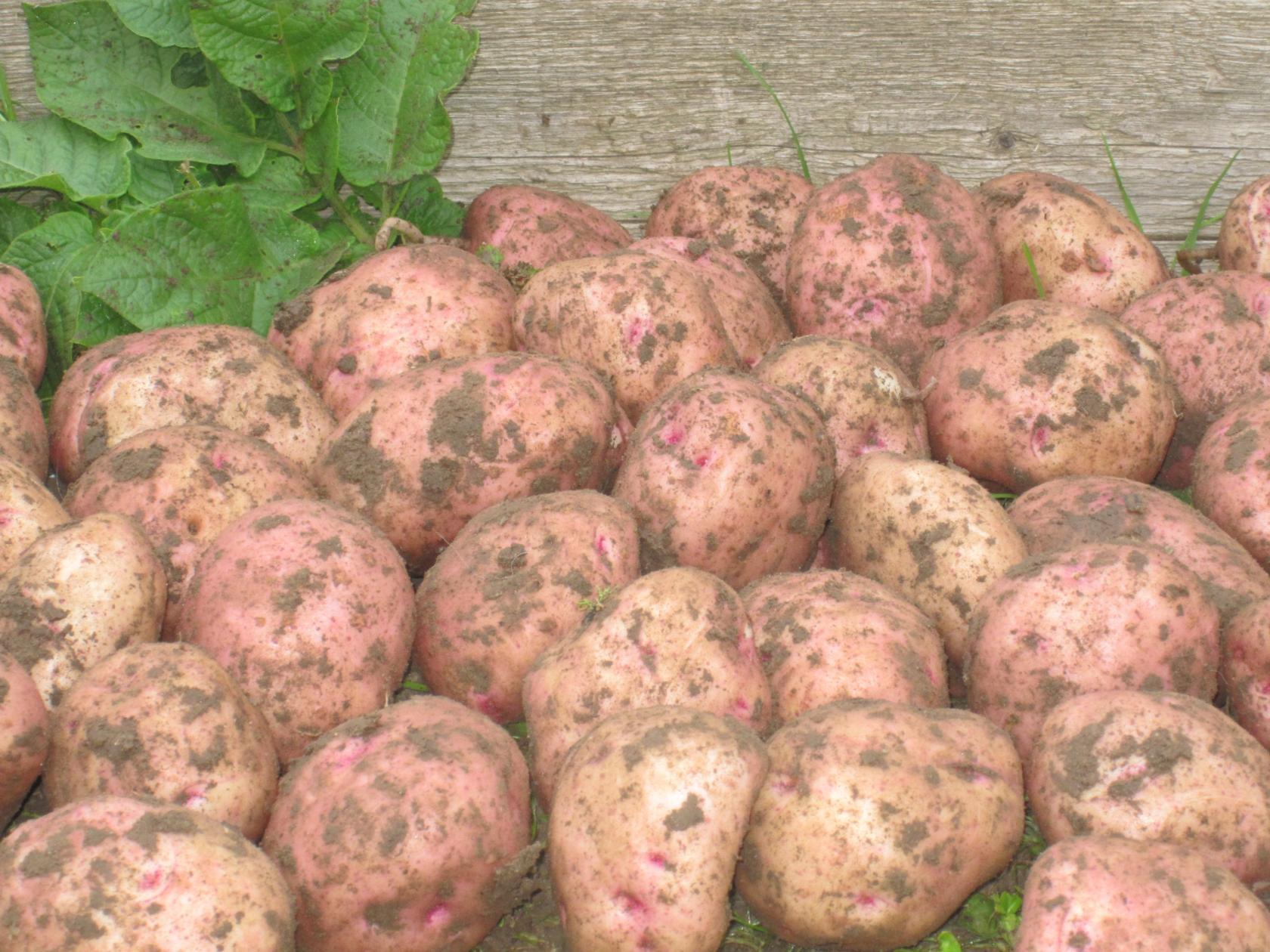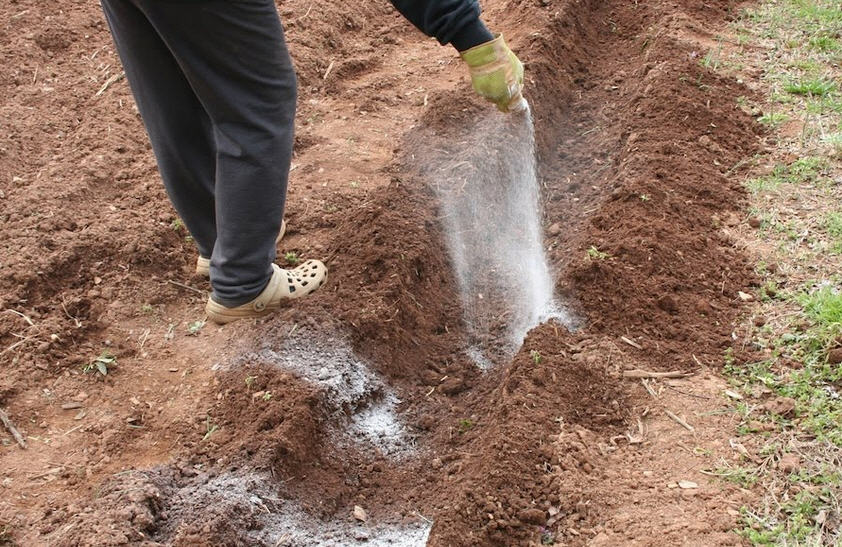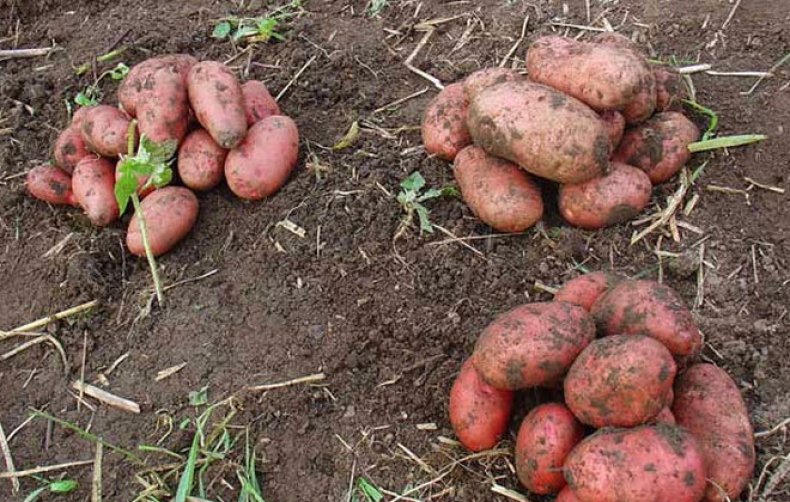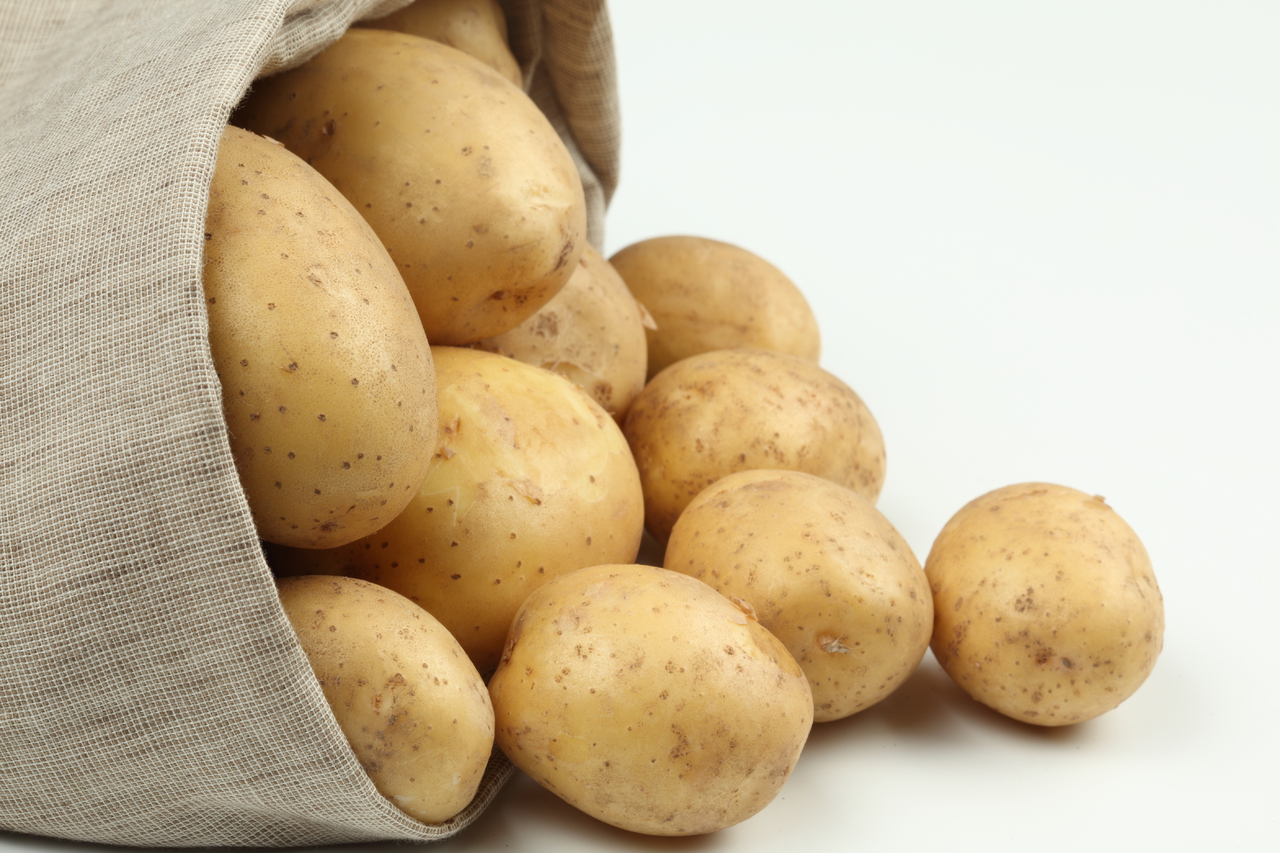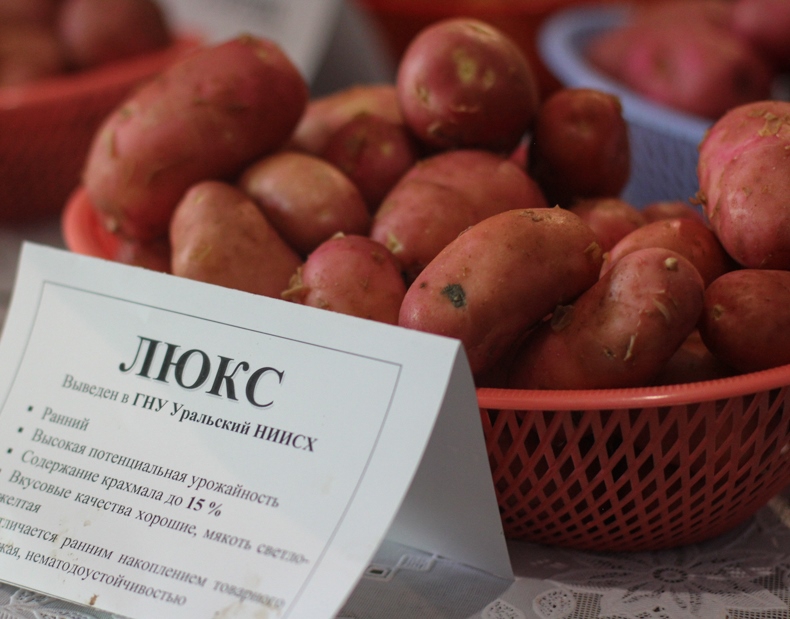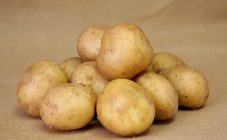Content:
Perhaps there is not a single person who does not like potato dishes. It contains a large amount of vitamins and minerals that are beneficial to the body. They are especially abundant in young potatoes. The Ilyinsky variety has gained great popularity, which has established itself as a high-yielding variety with excellent taste and presentation.
Description of potatoes Ilyinsky
Ilyinsky potatoes were bred in 1999 by Russian breeders. It is recommended for cultivation in the Central Black Earth, Volzhsky regions, as well as for Ukraine and Moldova. The plant has an average height, stems decaying from the center. Inflorescences are small, reddish-purple in color. The fruits have the following characteristics:
- their shape is uneven, round, sometimes slightly longitudinal;
- weight - from 70 to 150 g;
- outside the color is bright, red-pink;
- pulp inside white color;
- eyes are red, shallow;
- starch content - 16-18%.
Ilyinsky medium early potatoes. You can start harvesting 70-90 days after planting the tubers. Average yield: 200-300 centners are removed from 1 hectare, under favorable climatic conditions - up to 350 centners / ha.
The peculiarity of this potato is its high marketability. The number of tubers suitable for consumption or sale is 93-95% of the excavated crop. Ilyinka fruits are intended for summer consumption, however, they are well preserved for a long time.
Agrotechnics
Precursors of culture
In order for the tubers not to be struck by various fungal diseases, it is necessary to know which plants should be predecessors before planting potatoes. The best of them are legumes, crucifers, pumpkin crops, as well as onions and garlic.
Siderates will also improve the soil well: clover, phacelia, oats, rye, mustard. Their property is such that they disinfect the soil, destroy the fungal spores in it. Siderata are left on the site until spring, plant residues are embedded in the ground.
Preparation of planting material
In early spring, the tubers are taken out of the basement to a warm room for germination. The boxes for keeping root crops should be low; no more than 2-3 layers of potatoes should fit in them. Sprouts formed when storing tubers in the basement must be torn off - they are not viable.
In about a month, strong elastic shoots will grow. Before planting, the tubers of Ilyinka are processed with trace elements. Due to the performed procedure, resistance to diseases will increase, respectively, the accumulation of nutrients and yield will be higher.
Soil preparation
In autumn, deep plowing of the soil is carried out. In the spring, after the thaw, it needs to be well loosened. The peculiarity of the potato root system is such that it has weak branching and a low ability to deepen. For this reason, if the soil is not loose enough, the plant will not be able to grow a large number of tubers.
To keep the potato rows straight, you need to use a rope. It stretches along the rows, they are guided along it when landing. If the terrain is sloping, the vegetable is planted across the slope. With this planting method, moisture in the soil is better preserved.
Planting process
. There are several ways to plant potatoes in the ground.
- Single line (single row). The tubers are planted in rows, the interval between which is 60-70 cm.The distance between the tubers in a row is 25 cm, the planting depth is 7-8 cm.
- Tape. Planting is done in 2 rows at a distance of 30 cm from each other. Through 110 cm draw the same 2 lines. The method is mainly used on large farms.
- Ridge. The tubers are planted in rows at a shallow depth, covered with a slide (ridge). With this method of cultivation, the tubers warm up well, the crop is harvested 1-2 weeks earlier.
Potato care
To obtain a good harvest, it is necessary to carry out timely watering, loosening, hilling of the vegetable.
Frost protection
Varietal potatoes are planted early, while the possibility of freezing of its shoots remains, since the threat of frost remains in May. The first shoots must be covered with a layer of soil from 3 to 5 cm. Without this, the vegetable will not die completely, but the yield will decrease significantly.
Watering
The first time watering is not required, especially since the tubers are planted in damp ground. Excess moisture can clog the ground, this will be an obstacle to the good development of the root system. If the roots are located close to the surface, it will be difficult for them in the future to extract moisture for the development of the bush.
The first watering is carried out after the germination of the first shoots. In the future, the need for moisture increases. Most of all it is required during the period of bud formation and during flowering, its lack will negatively affect the green space.
Hilling
This process is necessary not only to protect the plant from frost, but also to raise the grown and fallen horizontally shoots. The bush will become more sprawling, shoots will begin to grow more intensively underground. A new crop will subsequently be formed on them.
In addition, when hilling, the soil is loosened, while the access of oxygen to the roots increases. Another plus of loosening is that weeds are removed at the same time.
Top dressing
To obtain a bountiful harvest, top dressing is required. It is held 3 times per season:
- The first time with nitrogen fertilizers during the growth of green tops.
- The second time to accelerate budding with potash fertilizers.
- The third feeding is done with superphosphate to speed up the process of tuber formation.
In a small area, it is convenient to use fertilizer solutions; on large plantations, it is more advisable to use dry dressings, sprinkling them under each bush.
Pests
The main pest of the Solanaceae family is the Colorado potato beetle. It emerges from the ground to the surface with the appearance of the first shoots of potatoes. Beetles appear unevenly: first those that hibernated closer to the surface, then the rest. They multiply quickly and are capable of destroying plantings in a short time.
To get rid of them, it is necessary to manually collect adults, larvae, eggs and destroy them. If there are too many pests, you will have to use insecticides, which can be bought at any garden center and applied according to the instructions. Spraying is done in dry, sunny weather.
Also, potatoes can be attacked by a nematode - a worm that settles in a tuber, then destroys the stems and young tubers. The source of infection is the seed. As a control measure, crop rotation is performed. The site is sown with siderates, only after 3-4 years the potatoes can be returned to their original place.
Diseases
Ilyinsky potatoes can be affected by late blight.This fungus affects first potato leaves: spots appear on them, which grow over time. After watering or rain, spores of the fungus enter the soil and infect the tubers.
In order to prevent plant infection with late blight, you must:
- in the spring, before planting, discard diseased tubers;
- Hilling 2-3 times per season;
- spray the bushes with antifungal drugs several times;
- mow the tops before digging out the tubers (this will prevent contact of infected stems with vegetables);
- harvest in dry weather, dry it well.
Advantages and disadvantages
Each variety has its positive and negative sides. According to vegetable growers, Ilyinsky has many more advantages than disadvantages. Positive qualities include:
- early maturation;
- unpretentious care;
- high productivity;
- good presentation;
- excellent taste;
- a wide range of tubers.
The disadvantages of the variety include poor tolerance of excess moisture, as well as susceptibility to phytophthora.
For almost two decades now, this potato variety has been cultivated on their plots by summer residents, as well as in industrial production by farmers. Its quality has been tested over the years; it is very popular with customers.
